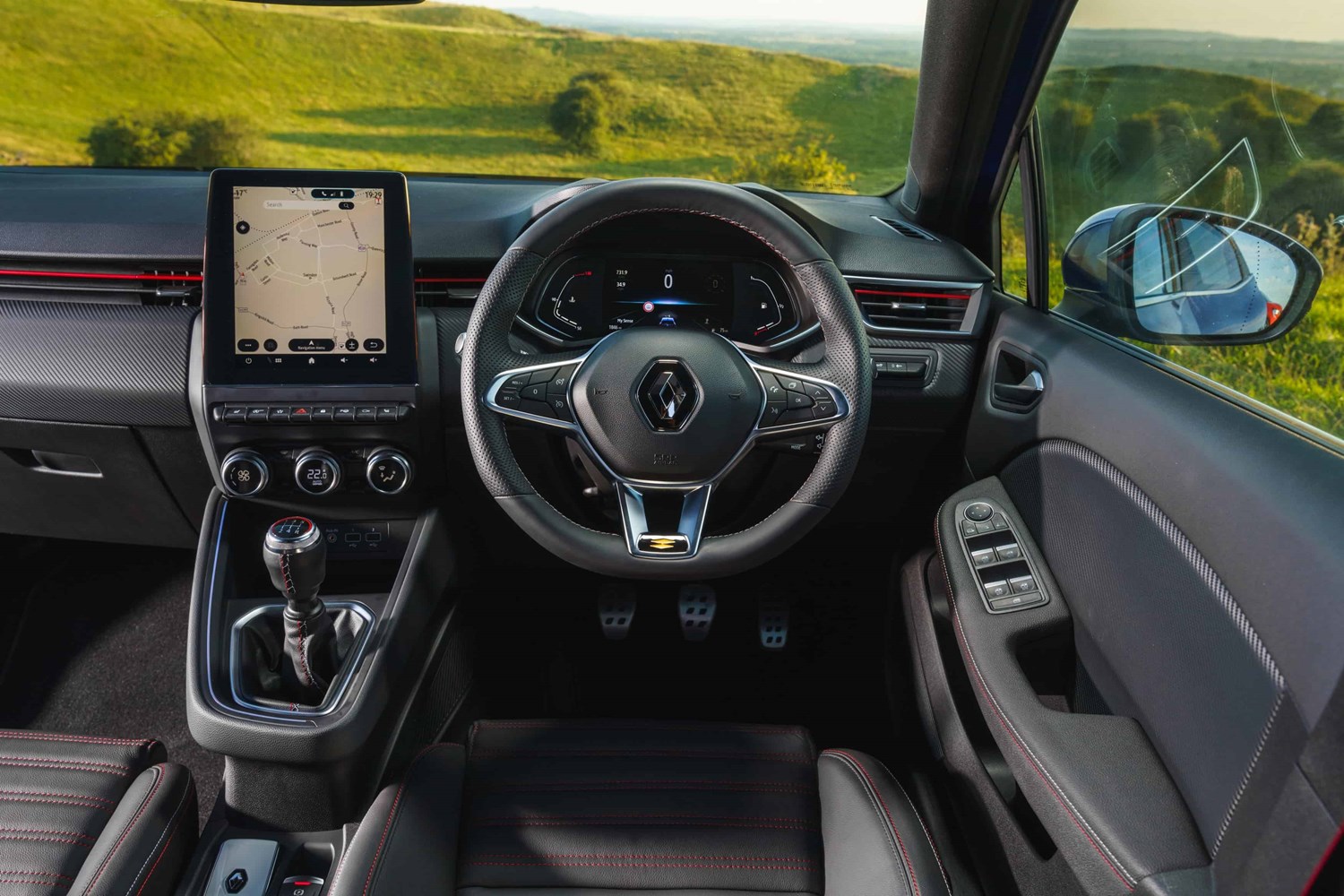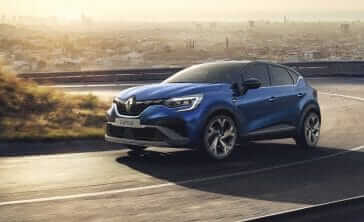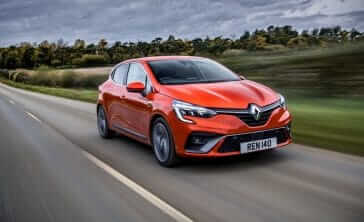Review
The Renault Clio has been with us in some guise or another since 1990, when the original model was first launched. Since then, the popular supermini has gone on to span five generations, with the current model being released in 2019. With more than 15 million sales since its launch, the Renault Clio is the best-selling French car of all time. It also remains one of Europe’s most popular new cars, and Renault’s biggest seller in the UK, too.
In addition to the regular, everyday models that make up the majority of Clio sales, Renault has also produced a number of high-performance Clios during its lifespan. The original Clio Williams hot hatch was released in 1993 and is now a modern-day classic. Another iconic fast Clio was the Renault Sport Clio V6, which was based on the second-generation model.
But while the Clio may be one of the trendier hatchbacks available on the market, it has always struggled to keep pace with the likes of the Ford Fiesta and Volkswagen Polo in terms of outright popularity and appeal. That’s something that Renault is doing a good job to change on this new car…
Latest model
On looks alone, you might not think this fifth-generation Clio is actually a new model, but rather a facelift. But Renault says how the Clio looks is one of the main factors as to why people buy it, so you can see why they’ve taken an evolutionary approach here, introducing new LED lights and making the car marginally shorter than its predecessor.
But it’s underneath the surface where it’s all change. The Clio sits on a new CMF-B platform that allows for electrification, so a hybrid model is available for the first time. Renault has also cleverly changed the cabin to maximise space – meaning the boot is significantly bigger than before.
The interior is perhaps the biggest change, though, with a new layout, more technology and improved materials being used throughout in a bid to take the Clio a step further upmarket.
Value for money
As with the majority of superminis, the Clio has moved upmarket over the years as buyers demand higher quality and more creature comforts – even in small cars. It means that the Clio isn’t quite the bargain model it once was, with prices starting from £15,295 for an entry-level Play SCe 75 model. That said, it still undercuts the Ford Fiesta and Vauxhall Corsa for price.
Standard equipment is quite impressive, though, and includes cruise control, LED headlights and a suite of safety kit. You’ll probably want a mid-spec Iconic version, though – these coming with rear parking sensors and a touchscreen that entry-level models miss out on.
Given the latest Clio only arrived on sale towards the end of 2019, these models remain quite pricey, though a six-month-old example with just 2,000 miles on the clock can be had for £12,490 – nearly £3,000 off the list price.
If you’re not so fussed about having the latest model, the previous-generation Clio is worth looking at. A 2016 version in an appealing Dynamique Nav spec with a turbocharged petrol engine with around 50,000 miles on the clock is available for around £6,500 – something that would be a good buy.
Looks and image
The Clio has always been a very stylish model, and even with only limited exterior changes here, it continues to look fresh and modern. As mentioned earlier, the Clio now comes with LED headlights as standard, while a larger grille helps to give it a bolder look. If you’re coming from an older Clio, you might hope that the design had perhaps changed a bit more, but either way, this hatch is still a clean and fresh-looking model. Higher-spec R.S. Line versions are the ones to go for if you value style – thanks to their sportier look.
The interior is the biggest change, though, as the cheap plastics and low-rent feel of its predecessor are gone. While it still doesn’t feel quite as upmarket as the Peugeot 208, it eclipses the Corsa and Fiesta with its high-quality interior, with new materials being used and a far cleaner look adopted throughout. You’ll need an Iconic model to get the seven-inch touchscreen, which is easy to use and hosts all the functions you’d need. S Edition models upwards utilise a brilliant 9.3-inch touchscreen as well, while you can choose a fully digital 10-inch digital instrument cluster from the options list.
The Clio remains good to drive, too – feeling nimble but at the same time refined and comfortable. While not as fun as the Fiesta behind the wheel, the Clio is a great all-rounder for a whole mix of driving.
Space and practicality
Renault has worked hard to make this new Clio more useful and practical than its predecessor, and it’s certainly succeeded. It’s the boot that impresses, with the Clio now having 391 litres of room. That’s more than the likes of the Vauxhall Astra and Volkswagen Golf from the class above, and the most of any supermini. A high load lip means it’s perhaps not as useful as those cars, though.
It’s roomy in the rear seats for a car of this size, with adults likely to be able to get comfortable – providing the driver or front passenger doesn’t have their seat too far back.
The Clio also has a brilliant safety record – receiving a five-star safety rating when tested by Euro NCAP in 2019, who also named it one of the safest cars in its class.
Engines
The Clio is available with a good selection of engines – including petrols, a diesel and also a hybrid.
The entry-level engine is a naturally aspirated 71bhp 1.0-litre petrol unit mated to a five-speed manual gearbox (badged SCe 75). Unless you drive completely around town or are looking at getting it as a new driver, it’s worth avoiding as it’s exceptionally slow – 0-60mph taking a lethargic 16.2 seconds with this engine.
Moving up the range, next is a turbocharged 1.0-litre (the TCe 100), which is our choice. It produces 99bhp and is available with a five-speed manual or CVT automatic transmission –managing the sprint to 60mph in 11.3 seconds with the latter. The most powerful petrol is the TCe 130 – a turbocharged 128bhp 1.3-litre petrol unit, which uses a seven-speed automatic gearbox. With this engine, it’s the fastest Clio currently available – hitting 60mph in 8.8 seconds and reaching a top speed of 125mph.
If you do a lot of miles each year, consider the 84bhp 1.5-litre diesel (Blue dCi 85), which utilises a six-speed manual gearbox and sends the Clio to 60mph in 14.5 seconds.
There is also a new hybrid model for 2020 – known as the E-Tech. It’s a new powertrain that pairs a 1.6-litre petrol engine with two electric motors and a clutchless automatic gearbox. It’s the most powerful Clio available, producing 138bhp and managing 60mph in 9.7 seconds. Its hybrid capabilities extend much further than others, too, as it’s able to travel on electricity at speeds up to 38mph, whereas others can usually only do that up to around 20mph.
Running costs
Regardless of which Clio variant you go for, it should prove to be efficient and cheap to run. On paper, the model that’s best on fuel is the diesel, which can return up to 67.2mpg, with CO2 emissions of 109g/km.
However, if you drive predominantly around town, the hybrid is a better option. It returns 64.2mpg and has low CO2 emissions of 98g/km, meaning it could be an appealing company car because of its low benefit-in-kind (22 per cent).
Petrol variants will return around 50mpg, with CO2 emissions ranging between 119g/km and 131g/km.
If you’re a new driver, you should choose the SCe 75 version for its low insurance group of three.
Things to look out for
The new Clio is still too new to fully gauge its reliability, though it should prove to be a dependable choice with its tried-and-tested engines and interior tech. Renaults also come with a five-year warranty, so providing you keep it under the 100,000-mile limit, it will be covered until at least 2024, too.
Rivals
The supermini class remains one of the most fiercely competitive car classes around, and the Clio has to go up against two of the UK’s best-selling cars – the Ford Fiesta and Vauxhall Corsa. Other models in this class worth consideration are the Seat Ibiza, Skoda Fabia and Hyundai i20, while if you fancy something a bit more upmarket have a look at the Volkswagen Polo or Peugeot 208.
Depreciation warning
Renaults don’t have the best record when it comes to holding their value, and while prices seem to be holding firm on this latest car, you’re still able to save several thousand pounds by choosing a nearly new version.




